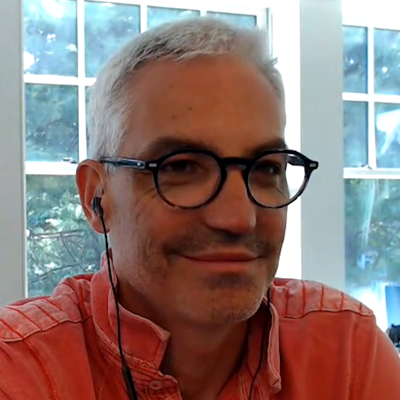An Industry Transformed
Digitally Native, Not by Choice
The COVID-19 pandemic illustrates how quickly insurers can adapt.
- Kate Smith
- September 2020
-





Insurers have been plodding along the road to digital transformation for years. But when the COVID-19 pandemic caused wide-scale shutdowns and forced most business to be conducted virtually, the insurance industry was able to achieve years' worth of digital progress in a matter of weeks.
The crisis taught them a valuable lesson: They can turn on a dime, when forced.
Though insurers are still far from the goal of being successful digital organizations, experts said the pandemic showed the industry what it's capable of.
Panelists
Bill Pieroni, ACORD
Sean Ringsted, Chubb
Tanguy Catlin, McKinsey
“Most insurance companies were very surprised by their ability to pivot their entire operating model toward virtual over the course of hours, days, at most, weeks,”Tanguy Catlin, senior partner at McKinsey, said. “I think what it has led to is a paradigm shift in mindset about the art of the possibilities. Most carriers now do not imagine going back to a pre-COVID world. There is a mindset shift that was spurred by COVID-19 for many, many insurers.”

Bill Pieroni
ACORD
Catlin recently joined ACORD CEO Bill Pieroni and Chubb Chief Digital Officer Sean Ringsted for a panel discussion on how COVID-19 has impacted insurers' digital journeys and strategies. Their panel was part of a four-part series put together by Best's Review and AMBestTV on how COVID-19 has transformed the insurance industry.
According to these digital experts, the COVID-19 pandemic accelerated insurers' digital strategies and spotlighted digital shortfalls within organizations. It also showed carriers the value of their past digital investments.
“Digitization, as our industry knows, is a very long, lengthy process,” Pieroni said. “For those that were digitized firms or digital competitors, they're certainly gaining sources of competitive and tactical advantage. For the laggards, though, and for those that had isolated digitization, purpose-built forms of digitization for pieces of the value chain, they're probably a little behind now.
“If they were having issues around resource allocation, investment, and business cases, they're probably getting a little more traction now.”
Organizationally, the pandemic forced insurers to become more agile.
80%
The percentage of North American consumers that interact with their insurer through digitized mechanisms.
Source: ACORD
“The velocity of decision-making that led to the crisis management is something that was quite new for many carriers,” Catlin said. “They don't want to go back to the old ways of taking months and years to make important decisions. There is a rethinking of the operating model toward agile ways of working that was very much accelerated in big part by the experience of managing the crisis.”
Embracing new ways and new mindsets is critical to continued transformation. And there is a lot of room for future digital transformation. While the transition to a digital operating environment was a collective success for the industry, true digitalization goes well beyond the operational changes that have occurred during the COVID-19 shutdown.
“I draw a distinction between, say, operating remotely and the digital age,” Ringsted said. “For us, the digital age is a much broader perspective in terms of how we think about product and service, and how we think about the customer.
“By and large, we haven't moved forward as an industry collectively in that regard. It's shown that we can operate remotely, but we're a long way away from being an industry that's operating and succeeding in a digital age.”
To get there, insurers should focus on three areas—data integration, customer journeys and partnerships.
Data Deficits
Pieroni said insurers that have struggled during the pandemic typically show deficits in three areas—data, software and architecture.
“You have to be able to share data internally in an unsiloed way across the value chain,” he said. “You need to be able to use data and analytics at the moment of value when you have first notice of a loss, when you've got a customer inquiry.
“Many carriers globally use data for analysis to develop insights, applications, and imperatives,” Pieroni said. “But if you don't do so near real time, I think it really puts you in a poor position relative to those carriers that do.”
Ringsted said gaining insight from data is easy, operationalizing it at the customer level is hard.

The velocity of decision-making that led to the crisis management is something that was quite new for many carriers. They don’t want to go back to the old ways of taking months and years to make important decisions. There is a rethinking of the operating model toward agile ways of working that was very much accelerated in big part by the experience of managing the crisis.
Tanguy Catlin
McKinsey
“It's one thing to have the insights,” Ringsted said. “Making it operational—whether that's in the underwriting piece with the field, with the agents, or in claims—that's the critical piece to this. I'm a big proponent of the operational last mile. You can have all the data that you want. And in some ways, getting the insights is actually the easy part of this; it may be 10% of it. But the rest of the work, the hard yards, is in getting that to where it can make an impact at the transaction level with the customer or the end user.”
In practical terms, that could mean routing calls to the right person in a call center, quickly getting information into the hands of agents at the point of purchase, or knowing where and how to get a product in front of a customer.
“Today you have the tools and the technology to be to be able to do that,” Ringsted said. “The question is, can you stitch it all together and deliver it at the point of impact?”
Catlin said three dimensions are changing around data: It's shifting from static to dynamic, internal to external and structured to unstructured. For example, rather than using a raw credit score to price auto insurance, carriers are starting to look at shifts in a credit score.
“They are realizing that it's increasingly the change in the credit score that provides more information rather than the credit score itself,” Catlin said.
Carriers also are collecting and using external sources of data to build a more complete view of customers and risks.
“There is a lot of evidence right now that, in the low-engagement category, having access to external data might be more representative of what's happening in the life of the customer or the enterprises that you're trying to help protect,” Catlin said. “Then finally, it's the migration from structured to unstructured data, which allows you to provide a higher level of personalization of the experience.
“When you put those three together—static to dynamic, internal to external, structured to unstructured data—you start to see massive differences in level of performance that different carriers can achieve based on their maturity.”
Journeys and Partners
The COVID-19 crisis also highlighted customer “journeys.” These are how the client interacts with insurers and experiences the insurance process—be that buying a policy, servicing a policy or making a claim.
“As an industry, we've been failing our customer in terms of experiences,” Catlin said. “Satisfaction is low.”
This ties directly into insurers' ability—or inability—to integrate technologies.
“COVID certainly is disrupting the way you are looking into the purchasing journey, the claims management journey, the servicing journey,” Catlin said. “You cannot really solve the industry problem just by data alone or by architecture alone. You really need to invent end-to-end journeys, and that requires a level of integration of multiple technologies.”

I draw a distinction though between, say, operating remotely and the digital age. For us, the digital age is a much broader perspective in terms of how we think about product and service, and how we think about the customer.
Sean Ringsted
Chubb
Catlin suggested rethinking the entire journey first, and then considering what technical components are needed to deliver that improved experience. One simple example, which was evident during the pandemic, was the requirement of wet signatures.
“Right now, that's an opt-in under regulation,” Ringsted said. “Therefore, paper is the default system. I think you have to turn that on its head and make the electronic signature the default. To me, that's just a simple example of where and how we need to work together to make more of a digital ecosystem within the industry.”
Ringsted said the COVID lockdown gave insurers proof points around customer experience. Whereas before, carriers questioned how customers would respond to change, the pandemic showed them their clients welcome certain changes. Virtual claims adjusting is one example. During the pandemic, Chubb has relied on mobile technology for claims adjusting and site inspections. Policyholders use video to show inspectors around a site.
“Before, we may have thought the customer is going to find that intrusive,” Ringsted said. “But in fact, it's been very well received. In part, it's because the customer owns the schedule.”
Customers are demanding digitization, Pieroni said. According to the ACORD Insurance Digital Maturity Study, the number of North American consumers interacting with their insurer through digitized mechanisms has doubled in the last five years, jumping from 40% to 80%.
ACORD saw similar jumps around the world. Yet, in its study of the top 130 worldwide insurers, it found “fewer than 30% have truly digitized the value chain while 13% are not leveraging digital technologies within their current business processes.” More than half of the insurers in the study, it said, are “still exploring how digitization can be applied against their business model.”
To truly deliver great products, services and experiences to policyholders, insurers should be thinking about partnerships and collaboration. Insurers will eventually find themselves operating in a broader ecosystem, where multiple industries connect to provide an experience—a journey. For example, when buying a house, one might also buy a life insurance policy to pay off the principal in case a spouse dies.
“This is my homeownership journey. Across many customer journeys, insurance plays a role,” Catlin said. “There is a fundamental shift that's happening right now in society where, through technologies, the definition of the boundaries of industries are blurring.
“That creates both massive opportunities for insurers, because they can engage a lot more with their customer, as well as challenges, because they're going to need to position themselves on the strategic chessboard of relationship with their customers.”



























